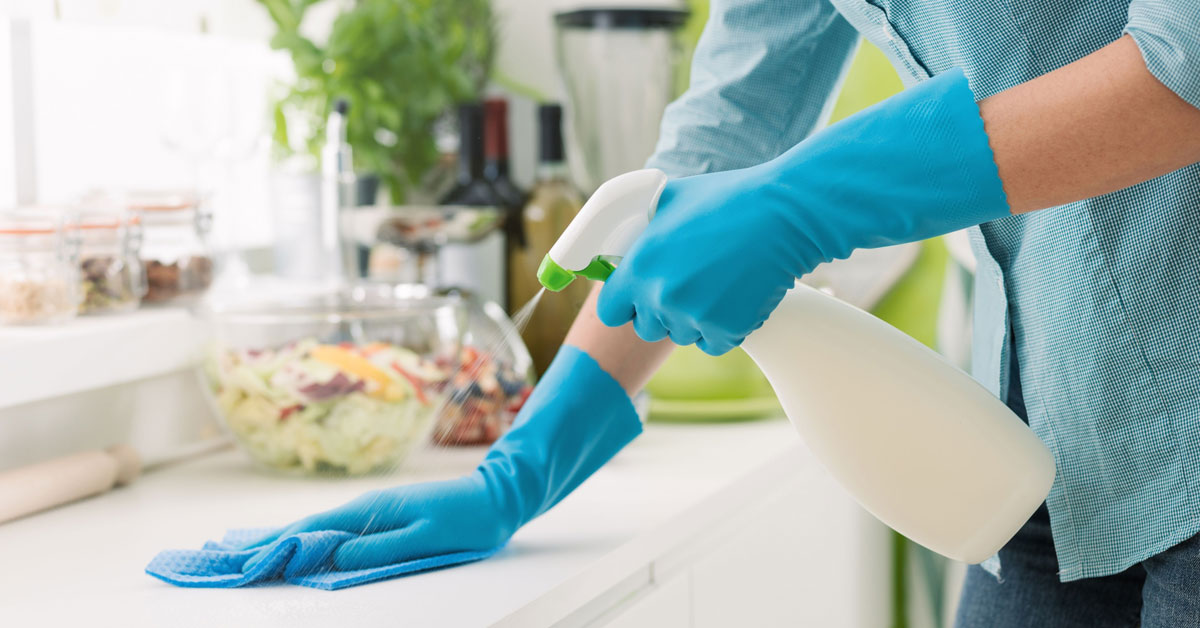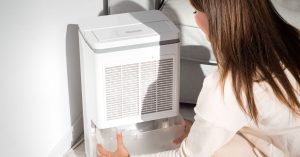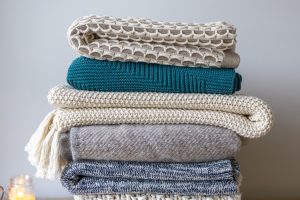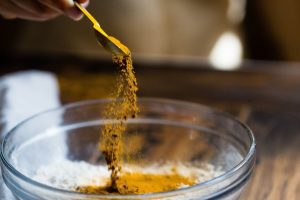If only we could get daily forecasts about our indoor air quality!
Often overlooked due to the more visible threat of outdoor pollution, indoor air pollution can also wreak havoc on your body. Some of the known consequences of poor indoor air quality include increasing your risk of asthma, skin conditions, and chronic lung disease.
The good news is that indoor air quality is mostly something we can control and, unfortunately, we harm it often by bringing pollutants and toxins into our homes. One of the most common ways this happens is through the use of chemical cleaning supplies.
How Can Cleaning Supplies Affect Indoor Air Quality?
The air quality inside your home is determined by the accumulation of harmful chemicals, allergens, and particulate matter. These pollutants become trapped inside, recirculating in the air we breathe.
How Indoor Air Pollutants Enter
Many chemical cleaning supplies contain large amounts of volatile organic compounds (VOCs). These compounds are often small and light enough to float in the air, just like dust would.
VOCs are a huge problem with spray cleaners, as these are designed to distribute tiny droplets of the product with great force and at great speed. However, even liquid, granulated, and powdered cleaners can release VOCs into the air as they degrade.
Once VOCs are floating around your home, you simply breathe them in. At low concentrations, this may not cause any significant issues, but what happens when VOCs stick around and build up?
How Indoor Air Pollutants Stay Inside
When outdoors, minor amounts of VOCs are usually not a big deal because all it takes is a breezy afternoon to take them away. However, most modern homes are built with ever-tighter insulation. As great as this is for your heating and cooling bills, insulation can keep all the air inside locked tight, providing VOCs and other toxins the chance to accumulate without proper air changes.
Because of this, some of the households at the most considerable risk of developing indoor air quality problems include:
- Those in extreme weathers, where the heating or air conditioning is always on
- Those in areas with high seasonal pollen counts
- Townhouses or attached homes
- Those housing people with kidney or lung disease
The higher the concentration of VOCs inside the home, the more severe effects they will cause. VOC accumulation also makes it more likely for different compounds to mix, multiplying their harmful effects.
Chemical Cleaners: 5 Ingredients to Look For
The easiest way to break the indoor air pollution cycle is to keep our homes pollutant-free. Look out for the following five ingredients next time you are shopping for cleaning supplies.
Ozone
Ozone is a type of gas molecule that usually accumulates in the upper atmosphere. However, large amounts of ozone at ground level can harm lung tissue and obstruct the airways. In addition, ozone can create formaldehyde when it comes into contact with products that generate VOCs.
According to the American Lung Association, ozone is one of the least controlled pollutants in the United States. This is partly because many air purifiers and deodorizers generate ozone. While ozone at low amounts is pretty good at neutralizing smells, making a place “smell” clean, it does not actually purify the air.
Formaldehyde
Formaldehyde is a colourless and highly flammable gas used in many construction and furniture materials. It is also released into the air when VOCs mix with ozone.
When it comes into contact with our respiratory tissue (such as our nostrils, throat, or lungs), formaldehyde can immediately cause a hacking cough, a sore throat, and itchy eyes. In more significant amounts, it can also cause a nosebleed. Over the long term, formaldehyde can also increase the risk of several types of cancer.
Ammonia
Ammonia is a very popular ingredient in household cleaners: it is a powerful disinfectant, kills mildew very quickly, and dissolves grease when deposited in mirrors or glass. Because of this, it is usually found in window cleaners, floor wax, bathroom sprays, and oven cleaners.
On the other hand, ammonia is a very strong irritant. Even a few droplets can cause redness and skin inflammation. Chronic exposure to ammonia can also aggravate asthma. Also, if it’s accidentally mixed with bleach, it can create chloramine. This is a much more dangerous gas, which can immediately cause shortness of breath and dizziness.
Benzene
Benzene is a colorless and highly flammable gas that has fortunately fallen out of use in recent years. Yet, it is still very good at removing grease or oil from metal surfaces, so it is still used in some stove cleaners or anti-rust agents.
Like the other chemicals on this list, benzene slowly seeps into the air during long term storage. Acute exposure to benzene VOCs can produce nausea, vomiting, headaches, and itchy eyes.
Terpenes
Terpenes are a category of aromatic compounds, often used in “pine-scented” tile cleaners and disinfectants. Terpenes are not considered dangerous by themselves. However, when they come into contact with benzene, they can create large amounts of formaldehyde.
3 Ways You Can Protect Your Family and Improve Air Quality Indoors
VOCs are so widespread and labelled with many different names, so it may be difficult to avoid them altogether. However, you can keep indoor air pollution in check through these three steps:
- Read Labels
Instruction labels often include important safety precautions that we should not ignore. In particular, if something is labelled as “do not mix with bleach”, it means it contains ammonia. Likewise, if the instructions for use state that you should ventilate or leave the room after use, do it.
- Look for EPA’s “Safer Choice” label
The Environmental Protection Agency’s “Safer Choice” program routinely tests and audits cleaning products. Look for the Safer Choice label to know whether a specific item is safe to be used indoors or around your family. You can read more about the program and its standards here.
- Use natural replacements when possible
Many commercial cleaners can be replaced with homemade alternatives. Simple ingredients such as baking soda and vinegar are very effective degreasers and tile cleaners. You can also make your eco-cleaners, repellents, and disinfectants by combining distilled white vinegar and certain essential oils, such as tea tree oil or lemon oil.
Improving Indoor Air Quality
When we clean our home, we are all trying to create a safe and healthy environment for our families. However, some of the ingredients in these cleaners can harm our home’s indoor air quality. Be aware of the ingredients used in household cleaners, avoid mixing them, and use them correctly.
Think differently about your health with Society of Wellness. Get your free health assessment here.







